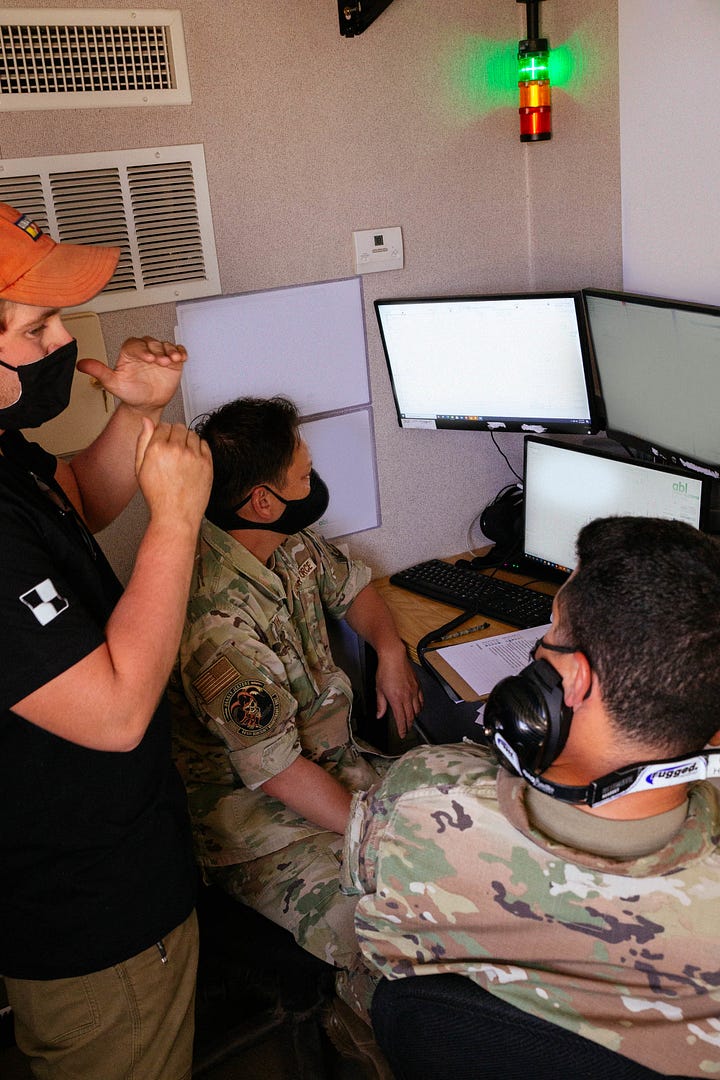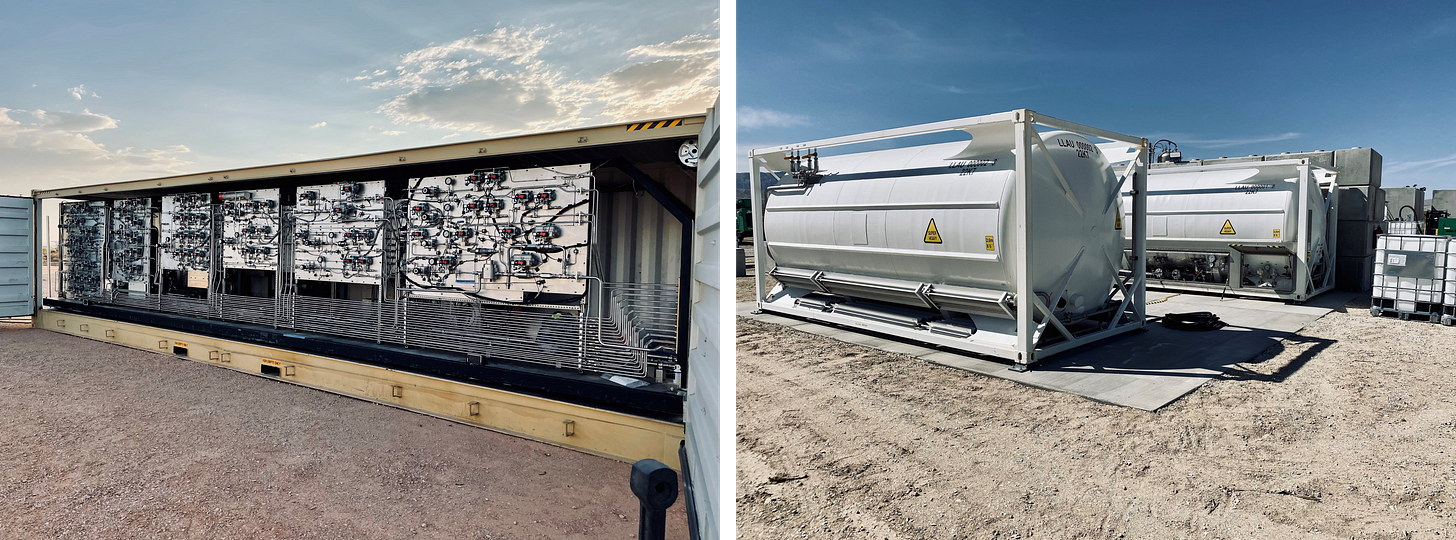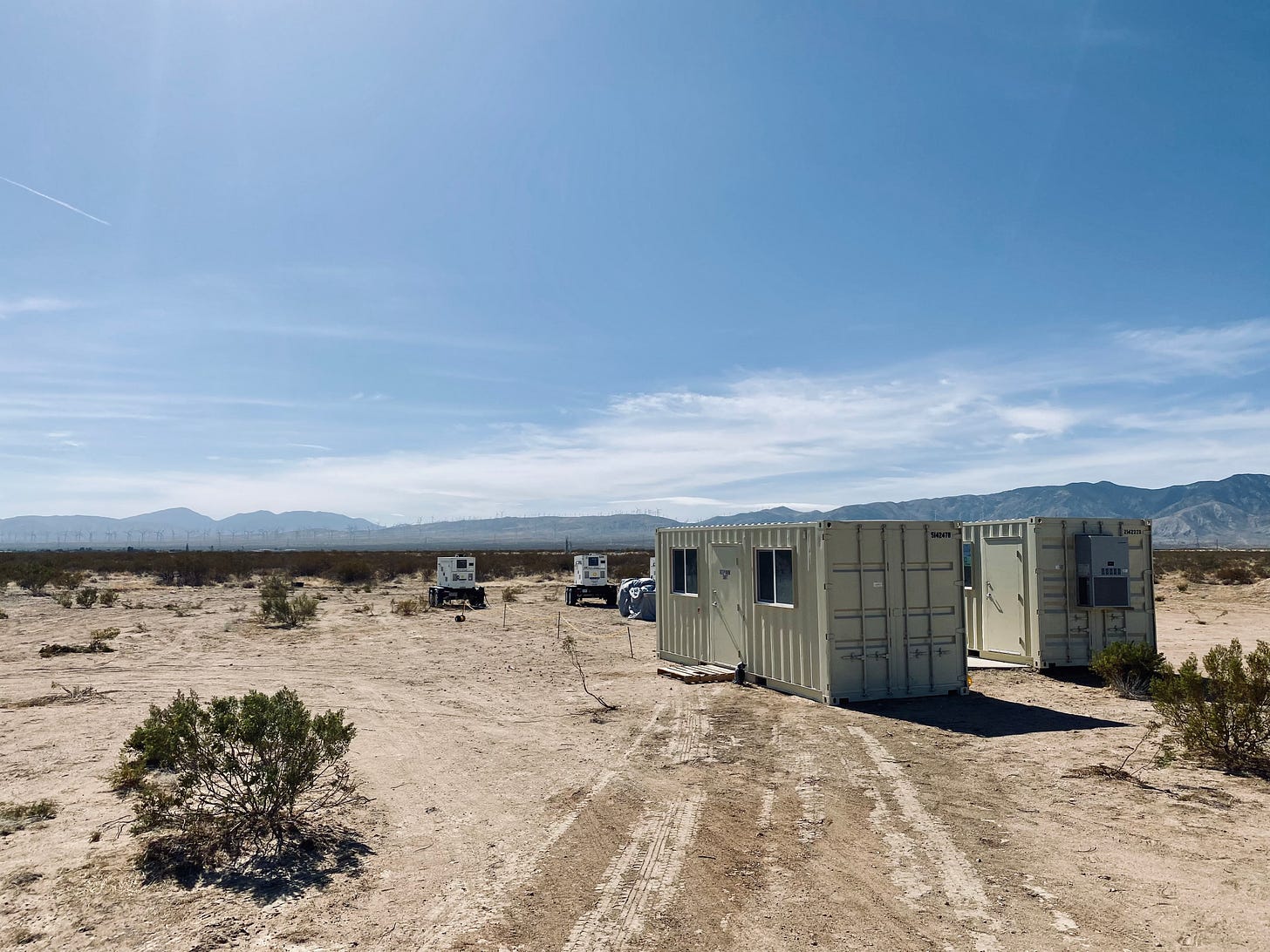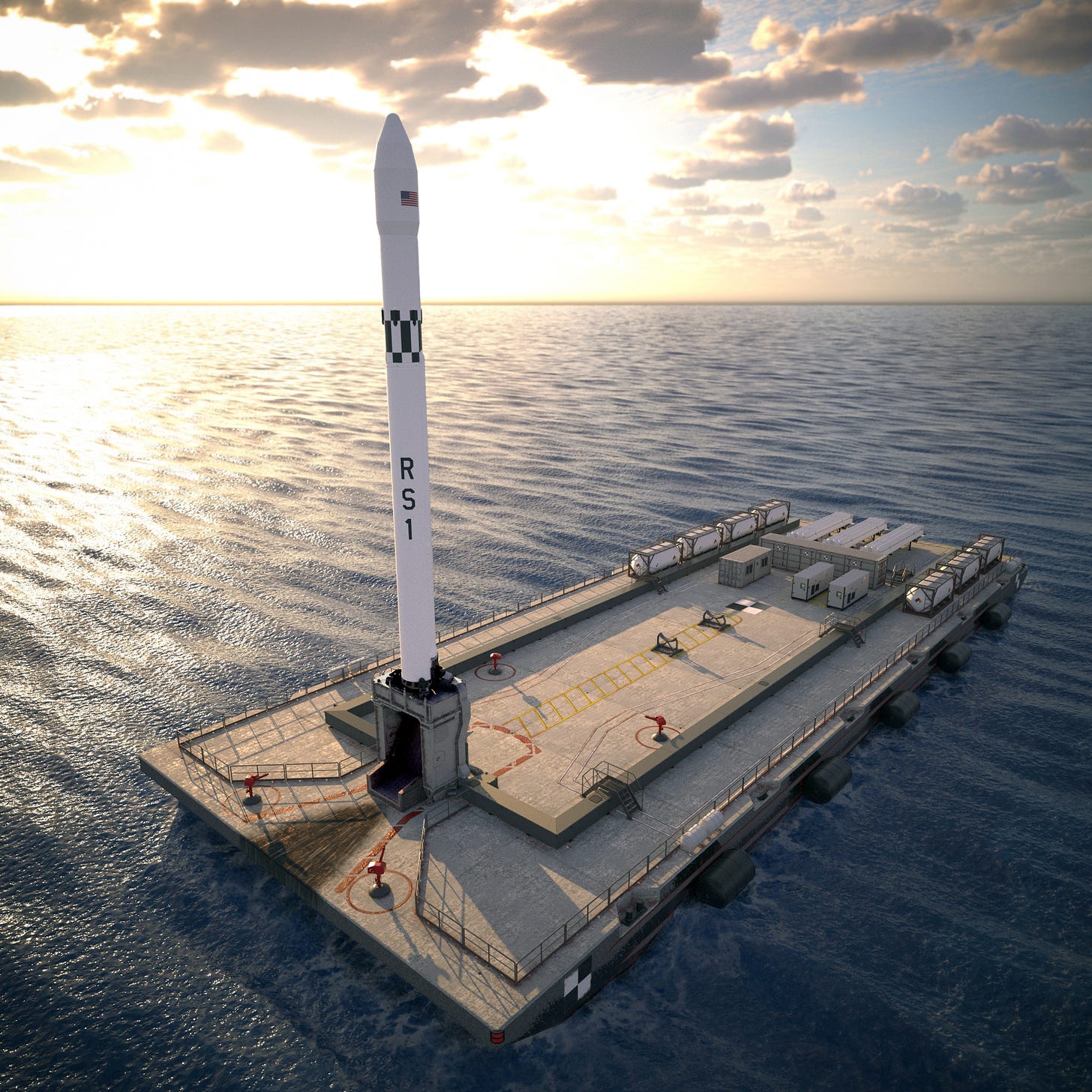The Global Future of Launch
Planes can fly from runways, roads and ship decks. It's time for space launch to follow.


The first day without space technology would be a very bad day. Without GPS, the power grid would fail, financial transactions would stop, and air traffic would be grounded. Ground navigation for businesses like rideshare and food delivery would cease. We’d be blind to incoming hurricanes, ballistic missiles and other threats. U.S. and allied military forces around the world would become fragmented and unable to communicate.
As the value of space capability becomes clearer, there will be destructive forces in the world that threaten it with malicious intent. We must match these with insurmountable resiliency in our launch sites, launch vehicles and satellites. The latter two have seen real recent innovation and focus, but the launch site layer has not. Today, there are only four operational U.S. launch sites and three controlled by allies. Each site is strong, capable and operated by the world’s leading launch experts. However, the overall launch site layer represents a weak link.
This is driven by a lack of diversification in the layer. All of the sites are fixed and fixed sites are big juicy targets. They’re sprawling complexes that can be disabled in many ways. Even the most proven, high cadence launch vehicles will be grounded if launch sites are not available. With so few launch sites in the layer, it’s not hard to imagine losing 25% or even 50% of our launch capability overnight.
The Threat is Real
It could be easy to dismiss this risk as low likelihood. How realistic is it that a launch site could be disabled? The answer: it’s already happened. In just one example, the 2016 Canyon Fire stopped launch operations at Vandenberg Space Force Base for nearly two months while crews fought the fire and repaired base infrastructure.
To our knowledge, this wildfire occurred naturally, which highlights the general risk launch complexes face. But what if in the future a fire like this was set deliberately and launch vehicles had to be abandoned on the pad?
Besides arson, what if other attacks are perpetrated against our launch sites? The following scenarios are fictional, but rooted in modern threats that we face every day.
GPS Denial
A Space Force launch lifts off from Cape Canaveral Space Force Station to deliver a mission-critical space situational awareness satellite into geostationary orbit. At T+40s, the GPS sensor stops sending accurate location data to the flight computer. Inertial guidance systems attempt to hold course, but accumulated error steers the rocket off of its intended trajectory. The multi-billion dollar mission is lost. Investigations reveal that fishing vessels in the area experienced a loss of GPS around the same time as well. The launch fleet is grounded until the source of jamming can be identified.
Power Grid Sabotage
Lights flicker as the power goes out across Wallops Island. Emergency response crews converge on the main power station, where there are clear signs of sabotage. Transformers are smashed and wires are cut. The equipment damage is so extensive that it will take weeks just to get the right materials out to the site. The nearby rocket launch site is rendered inoperable.
In the Grey Zone
These type of attacks are indirect and asymmetric. Highly secure, billion dollar launch infrastructure can be impacted by vulnerabilities in completely unrelated systems. Actions can be unattributable, making it difficult to prove who was behind them. They can also be reversible. Perhaps the GPS jamming stops the next day. Because everything is in a grey-zone, formulating a response is difficult. However, the impact is certain. Without functional sites, the U.S. cannot launch satellites.
It’s a Common Threat
This threat isn’t unique to launch sites. It’s common to all critical military installations. Airbases are a close analog to launch sites. They are ground sites that enable capability aloft. If airbases are disabled, the U.S. cannot maintain air superiority, which has been proven to be a determining factor in major conflicts.
U.S. and allied defense forces have managed this threat with:
Large Numbers: There are hundreds of military airbases around the world and thousands more civilian airports that can also be utilized.
Diversified Architecture: Land based airports and ocean going aircraft carriers both launch planes while maintaining different threat and defense profiles. Even more sites and vessels can support aircraft with vertical take-off and landing capability.
Expeditionary Capability: If standard sites are disabled, U.S. and allied militaries are prepared to rapidly activate new locations. Recent global exercises have demonstrated the ability to operate military jets from highways.
Another close analogy is the triad architecture of our canonical strategic capability: nuclear deterrence. A three-pronged force structure of land-based ICBMs, submarine-based SLBMs, and strategic bombers ensures survivability. Given the dependency of command and control on satellites, it’s difficult to argue that orbital launch is any less strategic.
This is a winning recipe and it can be applied similarly to satellite launch.
GS0 is the Solution
Our existing fixed launch sites represent a venerable capability. But, fixed sites alone cannot guarantee space access. They must be complemented with lightweight, low-cost, modular and deployable launch infrastructure. This technology enables us to rapidly scale the number of global launch sites, as well as field an expeditionary capability to activate launch points in non-traditional locations (ex. a parking lot, airport or barge). The hybrid architecture boasts both proliferated, difficult-to-disable launch sites and established, high throughput spaceports.
To formulate this thesis, we carefully studied the launch site layer over the last five years. We traveled to sites in Australia, the U.K., Norway and across the United States. We’ve engaged with partners in Canada, Japan, Korea, and outlying U.S. territories. We flew out to an aircraft carrier in the middle of the Pacific to observe flight operations. Our launch team practiced with Space Force personnel and with stopwatch in hand, tracking the exact time it takes to build a new orbital launch site.
The product of our work is the GS0 Launch System, which is purpose built to enable the hybrid launch site strategy that the U.S. needs to guarantee space resiliency.
GS0 is a modular orbital launch site. Commonly referred to as a launch site in a box, it has two primary components: the Launch Mount and the Site System. The former raises the RS1 launch vehicle vertical. The latter contains the fluid and electrical systems to support launch. Secondary support modules include bulk propellant tanks and mission control units.
For a 1-ton class launch vehicle such as ABL’s RS1, this degree of mobility is unique. It differs from responsive launch, which is focused on launching satellites quickly. We support that important mission too (ABL Space Force Responsive Launch). But with GS0, we’re not just launching fast. We’re building the infrastructure to ensure we always have launch sites, from which we can launch fast.
Meaningful Payload Capability
The key needs in responsive space are (A) maneuverability, which requires meaningful propulsion and propellant, and (B) access to GEO and other high-energy orbits. To achieve these, the launch solution must be capable of delivering hundreds of kilograms to Geostationary Transfer Orbit (GTO) at a minimum. RS1 was designed with this mission in mind and delivers 1,350kg to LEO and 300+ kg to GTO. Mobile launch systems with minimal launch infrastructure have been developed in the past, but at an order of magnitude smaller scale and utility.
Modular and Transportable
The foundation of GS0 is that it’s modular and transportable. The infrastructure is built in our factory, by the same team that makes RS1. This results in low-cost, high-quality systems. We’ve built three GS0 systems and each was less than 10% of the cost for a traditional fixed launch site. At this cost point, it’s feasible to have ten, twenty or even hundreds of new sites around the world.
GS0 assets pack into shipping containers to leverage the world’s extensive intermodal transport framework. They can move discreetly and deploy globally by truck, train, ship or plane. Any flat pad can become an orbital launch site in a matter of days.
Rapidly Assembled
Once on location, a small team assembles the launch site assembles in a week or less. The centerpiece Launch Mount raises RS1 vertical without a strongback to minimize the total footprint. The Launch Mount interfaces with commonly available concrete pads, such those found on runways, parking structures and rail yards.
After being placed on the pad, the Site System and bulk tanks are connected by drag-and-drop modules containing cross country lines. The systems come to life in hours, undergoing predefined health checks to validate integrity before operations begin.
Operable Off-the-Grid
All GS0 operations can be executed from generator power. To prove this capability, we deployed a GS0 system to our Mojave Test Site in 2021. Over two years, we’ve run operations every week ranging from stage tests to engine hotfires. 100% of these have been performed on generators. This demonstrated capability makes GS0 self-sufficient and resilient to local power grid disruptions.
Storable for Long Duration
GS0 and RS1 are storable. They’re designed to be boxed, shipped and stored on location until required. We’ve selected low maintenance architectures and materials to support this. For example, we use metallic structures more frequently than composites. We’ve also designed our systems with testability in mind. We can perform periodic remote health checks and quickly commission the systems when it’s time for launch.
Operable at Sea
GS0’s prowess extends beyond land and into the maritime domain. The infrastructure is provisioned to interface with commercially available ocean-going barges. Like GS0, these assets are low-cost and have a robust supply chain. Our harborside Long Beach facility includes three acres of water space, giving us a strong base for maritime development.
Barge launch creates many advantages. The architecture augments land-based sites to increase the total number of launch points. The approach also enables access to specific orbits. For example, the sea based GS0 can travel to zero-degree latitude and support equatorial missions.
Operable by U.S. Government Personnel


GS0 offers a second differentiated advantage in that the systems can be optionally operated by non-ABL personnel (ex. the U.S. Government). Satellite launch is a strategic capability, similar to operating a naval ship or flying an aircraft. To truly be resilient, in extremis, the U.S. Government needs to be self-sufficient in performing space launch.
Again, we’ve designed GS0 with this mission in mind. Over the last four years, we’ve trained with our government partners on everything from site integration to vehicle operation. In the future, we’ll work with them to execute an orbital launch.
GS0 Delivers New Capabilities
GS0’s versatility delivers resiliency to satellite launch that is on par with aircraft operations. GS0 inherently diversifies the fixed site architecture that makes up the current launch site layer. One system can support fixed launch sites, deliver sea launch, and provide expeditionary capability for extreme and unique missions.
Global Launch Network
GS0 units can be permanently installed at sites in the U.S. and allied countries. Simply increasing the number orbital launch sites inherently improves our risk profile. Certain sites can also open new and strategic orbit access.
GS0’s modularity and low-cost reduce build time and capital expense. Combined, these lower the barrier to entry for new spacefaring nations. Recent advances in U.S. Technology Safeguard Agreements (TSA) have created the regulatory framework for U.S. companies to collaborate with close U.S. allies for launch.
We are developing launch sites at Kodiak, Vandenberg, Cape Canaveral and the Shetland Islands in the U.K. We’re engaged with partners overseas to further extend our terrestrial network, and barge builds will bring sea launch to fruition. Combined, these efforts will dramatically increase the number of global allied launch points for less than the cost of one legacy fixed launch site.
Expeditionary Capability
GS0 doesn’t need to be set up permanently. It can be rapidly deployed to non-traditional locations to quickly reinforce U.S. launch capability. The modular infrastructure can be stored in hangars or warehouses. If global tensions escalate, GS0 units can be called up to quickly create an unparalleled and proliferated launch capability.
GS0’s container form factor makes it difficult to determine the exact number and location of U.S. satellite launch sites. This changes an adversary’s thought calculus to create a deterrent. If disabling the main fixed launch sites won’t ground U.S. launch vehicles, then our adversaries may be less inclined to try.
We Believe in this Mission
GS0 and RS1 deliver a unique ability: highly capable satellites can be launched to LEO, GEO or Lunar orbits from a discreet, mobile system that may be optionally operated by U.S. Government personnel. We see this capability as the missing puzzle piece to guarantee space resiliency. These same features offer protection against natural threats like solar storms, space debris, general satellite malfunctions.
A resilient launch layer is just the beginning. Our goal is to develop a broad range of products that both grow and protect our economy and national security. We believe deeply in this mission and are always looking for other partners that do too.
Non-ABL Image Citations: A-10 Thunderbolt1, Canyon Wildfire2, F-35 Refueling3, F-35 on Runway4, Aircraft Carrier5, A-10 Thunderbolt6















